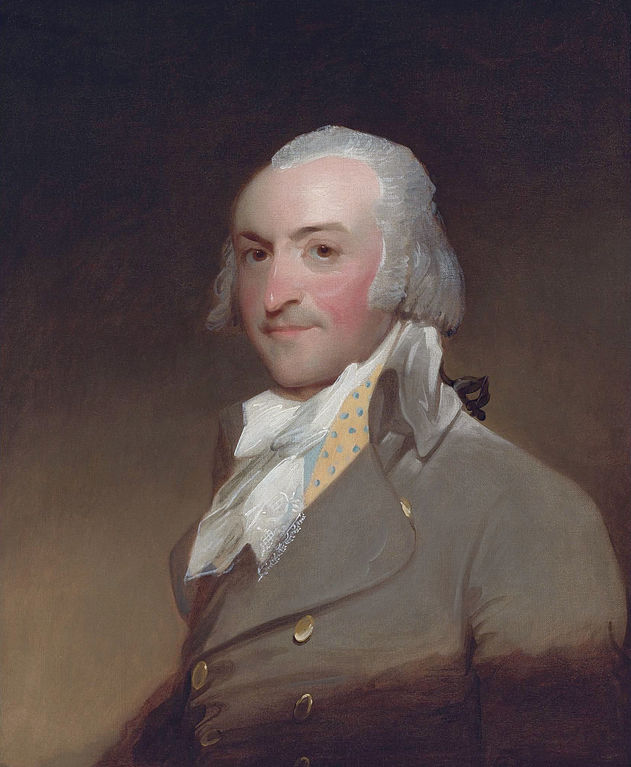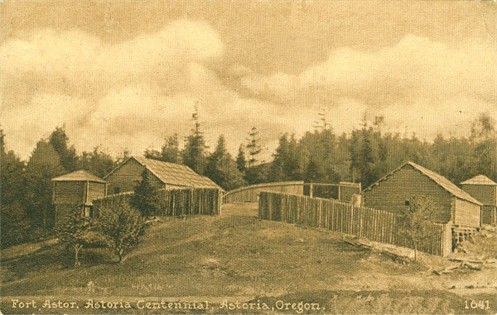
Portrait by Gilbert Stuart
Hoping to establish robust
trade relations with the native people of the Pacific Northwest,
John Jacob Astor dispatched expeditions by sea and land to reach
the mouth of the Columbia. Those who arrived by sea in 1811 founded
the town of Astoria and built a fort and trading post as a
principal base of operations.
(for more on Astor and the fur trade, click
here)

Astor's Fort Astoria, the westernmost fur trading post on
the continent.
They were joined in 1812 by the party that made its way over
land. To get there, the half starved Astorians, led by Wilson Price
Hunt, opened the route up Burnt River, through the Grand Ronde
Valley, and across the Blue Mountains to the Columbia at Umatilla,
a route that thirty years later would become the final leg of the
famed Oregon Trail.
Astor's venture
failed in Astoria, and the resident partners sold out to the North
West Company the following year. The British now had a foothold in
Oregon, and they renamed Astoria, Fort George, and carried on the
fur trade in Oregon until it merged with the Hudson's Bay Company
in 1821.
Britain and the US agreed in
1818 that they would jointly occupy the vast territory originally
comprising Oregon, Washington, and parts of Wyoming, Idaho, Montana
and British Columbia - with an eye to dividing it equitably in some
future time. That time didn't come until John Quincy Adams
negotiated a treaty with England settling the line of demarcation
at the 49th parallel.